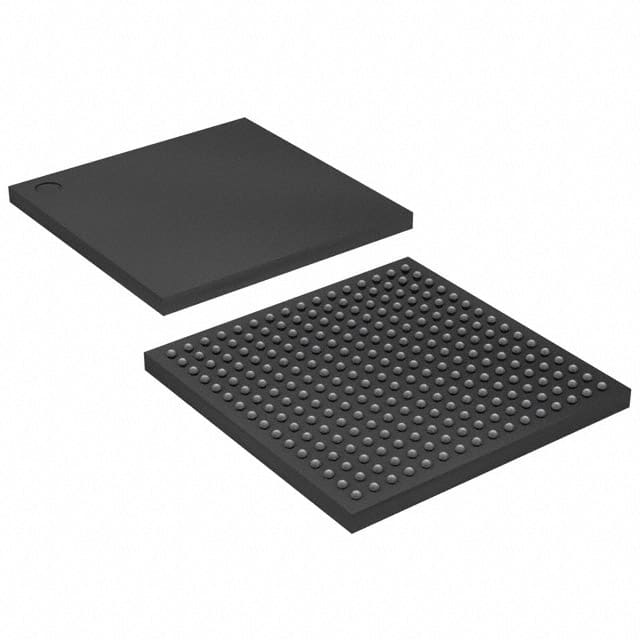Viz Specifikace pro podrobnosti o produktu.

XC7A100T-1FTG256C
Product Overview
Category
The XC7A100T-1FTG256C belongs to the category of Field-Programmable Gate Arrays (FPGAs).
Use
FPGAs are integrated circuits that can be programmed and reprogrammed to perform various digital functions. The XC7A100T-1FTG256C is specifically designed for high-performance applications.
Characteristics
- High processing power
- Flexible and reconfigurable
- Low power consumption
- High-speed data transfer capabilities
Package
The XC7A100T-1FTG256C comes in a 256-pin Fine-Pitch Ball Grid Array (FBGA) package.
Essence
The essence of the XC7A100T-1FTG256C lies in its ability to provide a customizable hardware platform for implementing complex digital systems.
Packaging/Quantity
The XC7A100T-1FTG256C is typically packaged individually and is available in various quantities depending on the manufacturer's specifications.
Specifications
- FPGA Family: Artix-7
- Logic Cells: 101,440
- Flip-Flops: 63,600
- Block RAM: 4,860 Kbits
- DSP Slices: 240
- Maximum Operating Frequency: 450 MHz
- I/O Voltage: 1.8V
- Operating Temperature Range: -40°C to 100°C
Detailed Pin Configuration
The XC7A100T-1FTG256C has a total of 256 pins, each serving a specific purpose in the system. The pin configuration includes input/output pins, power supply pins, clock pins, and configuration pins. A detailed pinout diagram can be found in the product datasheet.
Functional Features
- Configurable logic blocks for implementing custom digital circuits
- Dedicated DSP slices for high-performance signal processing
- Block RAM for efficient data storage and retrieval
- Flexible I/O interfaces for connecting to external devices
- Clock management resources for precise timing control
Advantages and Disadvantages
Advantages
- High processing power and flexibility
- Reconfigurable nature allows for iterative development and updates
- Low power consumption compared to traditional ASICs
- Fast data transfer capabilities enable real-time applications
Disadvantages
- Steeper learning curve compared to traditional microcontrollers
- Higher cost compared to off-the-shelf microcontrollers
- Limited availability of open-source tools and libraries
Working Principles
The XC7A100T-1FTG256C operates based on the principles of reconfigurable computing. It consists of a matrix of configurable logic blocks interconnected by programmable routing resources. The user can program the FPGA using Hardware Description Languages (HDL) such as VHDL or Verilog to define the desired digital circuitry.
During operation, the FPGA executes the programmed logic by routing signals through the configurable interconnects and implementing the desired functionality. This flexibility allows for rapid prototyping, customization, and optimization of digital systems.
Detailed Application Field Plans
The XC7A100T-1FTG256C finds applications in various fields, including:
- Communications: Used in wireless base stations, network routers, and communication protocols.
- Signal Processing: Employed in image and video processing, audio processing, and digital signal processing algorithms.
- Industrial Automation: Utilized in control systems, robotics, and factory automation.
- Medical Devices: Applied in medical imaging, patient monitoring, and diagnostic equipment.
- Aerospace and Defense: Used in radar systems, avionics, and military-grade communication systems.
Detailed and Complete Alternative Models
- Xilinx XC7A200T-1FBG484C
- Altera Cyclone V E FPGA - 5CEFA7F23I7N
- Lattice iCE40 UltraPlus FPGA - ICE40UP5K-SG48I
These alternative models offer similar capabilities and can be considered as alternatives to the XC7A100T-1FTG256C depending on specific project requirements.
In conclusion, the XC7A100T-1FTG256C is a high-performance FPGA that provides flexibility, reconfigurability, and powerful processing capabilities. Its applications span across various industries, making it a versatile choice for digital system implementation.
Seznam 10 běžných otázek a odpovědí souvisejících s aplikací XC7A100T-1FTG256C v technických řešeních
Sure! Here are 10 common questions and answers related to the application of XC7A100T-1FTG256C in technical solutions:
1. What is XC7A100T-1FTG256C? - XC7A100T-1FTG256C is a field-programmable gate array (FPGA) from Xilinx, specifically from the Artix-7 family. It offers a high-performance, low-power solution for various applications.
2. What are the key features of XC7A100T-1FTG256C? - Some key features of XC7A100T-1FTG256C include 101,440 logic cells, 6,840 slices, 240 DSP slices, 4.9 Mb of block RAM, and 500 MHz maximum operating frequency.
3. What are the typical applications of XC7A100T-1FTG256C? - XC7A100T-1FTG256C can be used in a wide range of applications such as industrial automation, motor control, medical devices, aerospace systems, communication equipment, and more.
4. How does XC7A100T-1FTG256C differ from other FPGAs? - XC7A100T-1FTG256C stands out with its balance between performance, power consumption, and cost. It offers a good combination of features suitable for many applications.
5. What development tools are available for XC7A100T-1FTG256C? - Xilinx provides Vivado Design Suite, which includes tools for designing, implementing, and debugging FPGA designs. It also supports various programming languages like VHDL and Verilog.
6. Can XC7A100T-1FTG256C be used in safety-critical applications? - Yes, XC7A100T-1FTG256C can be used in safety-critical applications. However, it is important to follow appropriate design practices and consider any necessary safety certifications.
7. What are the power requirements for XC7A100T-1FTG256C? - The power requirements for XC7A100T-1FTG256C depend on the specific application and configuration. It is recommended to refer to the datasheet and design guidelines provided by Xilinx.
8. Can XC7A100T-1FTG256C interface with other components or devices? - Yes, XC7A100T-1FTG256C supports various interfaces such as GPIO, SPI, I2C, UART, Ethernet, PCIe, and more. It can easily interface with other components or devices in a system.
9. How can I program XC7A100T-1FTG256C? - XC7A100T-1FTG256C can be programmed using Xilinx's programming tools like Vivado or iMPACT. It supports different programming methods such as JTAG, SPI flash, or partial reconfiguration.
10. Are there any reference designs or application notes available for XC7A100T-1FTG256C? - Yes, Xilinx provides a wide range of reference designs, application notes, and documentation for XC7A100T-1FTG256C. These resources can help in understanding and implementing the FPGA in various applications.
Please note that the answers provided here are general and may vary depending on the specific requirements and context of the application.

